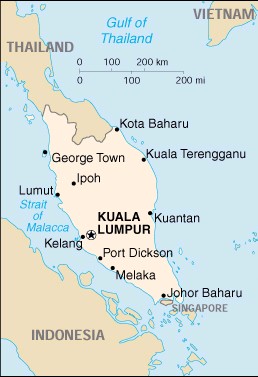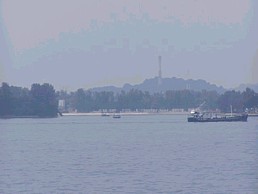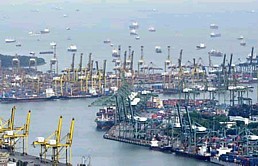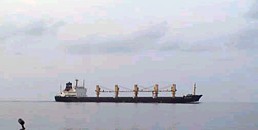
VITAL MARINE CANALS

 |
VITAL MARINE CANALS |
 |
|
|
  |
More than 50,000 vessels per year transit the 621 mile long Strait of Malacca. Linking the Indian and Pacific Oceans, the Straits of Malacca is the shortest sea route between three of the world's most populous countries -- India, China, and Indonesia -- and therefore is considered to be the key choke point in Asia. Narrow channels, shallow reefs, thousands of tiny get-away islands, and slow traffic with some 900 commercial vessels passing through each day make the waters around Singapore, Malaysia and neighboring Indonesia a pirate's dream.
The narrowest point of this shipping lane is the Phillips Channel in the Singapore Strait, which is only 1.5 miles wide at its narrowest point. This creates a natural bottleneck, with the potential for a collision, grounding, or oil spill (in addition, piracy has historically been a regular occurrence in the Singapore Strait, but over the past 15 years has grown alarmingly). Some 400 shipping lines and 700 ports worldwide rely on the Malacca and Singapore straits to get to the Singapore port. For example, 80% of Japan's oil comes from the Middle East via the Malacca Straits. To skip the straits would force a ship to travel an extra 994 miles from the Gulf. All excess capacity of the world fleet might be absorbed, with the effect strongest for crude oil shipments and dry bulk such as coal. Closure of the Strait of Malacca would immediately raise freight rates worldwide. With Chinese oil imports from the Middle East increasing steadily, the Strait of Malacca is likely to grow in strategic importance in coming years. | |
| The bombing in October 2002 of a nightclub on the Indonesian island of Bali raised concerns throughout the region that other targets -- including oil transit "chokepoints" like the Strait of Malacca -- could be targeted by terrorists as well. As of early November 2002, insurance rates had not been affected for tankers traveling through the Straits, but insurance companies did place a "war-risk" designation on Indonesian ports, which means that ships docking at those ports must get underwriters specific approval before landing at Indonesian ports. Reportedly, Singapore and Malaysia have begun escorting oil tankers and increasing naval patrols in their waters, but this has not eliminated the threat of terrorism or piracy in the region's shipping channels. Even Japan has now suggested its own naval patrols should assist, an offer so far refused by Malaysia and Indonesia. |   A vessel plying the Straits |



To return to Steve's Maritime Page CLICK HERE
|